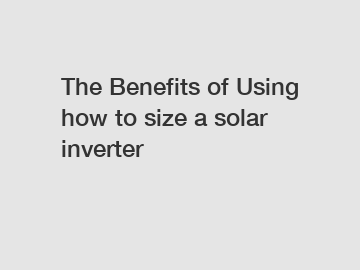Are monocrystalline solar panels better?
Solar energy has become a cornerstone of sustainable power generation, and choosing the right solar panel technology is crucial. One common dilemma faced by consumers is whether monocrystalline solar panels are truly superior to their polycrystalline counterparts. Let's unravel the intricacies of this debate to help you make an informed decision.
Composition and Structure:
Monocrystalline Panels: Composed of single-crystal silicon, monocrystalline panels boast a uniform and consistent structure. The manufacturing process involves growing a single crystal structure, resulting in high purity.
Polycrystalline Panels: Polycrystalline panels are crafted from multiple silicon crystals. The manufacturing process involves melting raw silicon and then cooling it, creating multiple crystals. While slightly less efficient, this method is more cost-effective.
Efficiency Comparison:
Monocrystalline Efficiency: Monocrystalline panels typically exhibit higher efficiency rates due to their single-crystal structure. This means they can convert a higher percentage of sunlight into electricity.
Polycrystalline Efficiency: Polycrystalline panels, while efficient, generally have a slightly lower efficiency compared to monocrystalline panels. The multiple crystal structure can result in a lower energy conversion rate.
Space Efficiency:
Monocrystalline Space Savings: Monocrystalline panels are known for their space efficiency. They can generate more power in a smaller area, making them ideal for installations with limited space.
Recommended article:
What Are the Rules for Lithium Batteries?
What is the best battery for energy storage?
LiFePO4 vs. Other Lithium Batteries: Why 100Ah Cells Stand Out
Unlocking Solar Power Potential: The Advantages of 36 Cell Solar Panels
The Advancements in High Voltage Stackable Lithium Batteries
What are the top tips for negotiating proppant prices?
How do you get the best life out of a lithium battery?Polycrystalline Space Requirements: Polycrystalline panels, while effective, may require a bit more space to generate the same amount of power as monocrystalline panels.
Aesthetics:
Monocrystalline Aesthetic Appeal: Monocrystalline panels are often considered more aesthetically pleasing due to their sleek and black appearance. This can be a factor for homeowners looking for a visually appealing solar installation.
Polycrystalline Appearance: Polycrystalline panels tend to have a bluish tint and a less uniform appearance. While appearance is subjective, some homeowners may prefer the sleek look of monocrystalline panels.
Cost Considerations:
Monocrystalline Cost: Historically, monocrystalline panels were more expensive to produce. However, advancements in manufacturing have narrowed the cost gap between monocrystalline and polycrystalline panels.
Polycrystalline Affordability: Polycrystalline panels are generally more affordable due to the simpler manufacturing process and lower production costs.
In the debate of monocrystalline vs. polycrystalline solar panels, the choice depends on various factors, including efficiency requirements, available space, budget considerations, and aesthetic preferences. Monocrystalline panels shine in terms of efficiency and space savings, making them ideal for those with limited roof space or seeking maximum energy production. On the other hand, polycrystalline panels offer a cost-effective solution without sacrificing overall performance, making them a practical choice for budget-conscious consumers. Ultimately, the "better" option depends on your specific needs and priorities.
What is a ceramic proppant used for?
Ultimate Guide to Heavy Duty Steel Wire Rope: Strength, Durability & Uses Explained
Steel Wire Handling Equipment: Are Traditional Methods Obsolete?
How to select the best steel cable manufacturer?
What is IEC 61727?
How is steel wire galvanized?
Unlocking the Potential of Sandton Technologies Edge: Your FAQs Answered
Related Articles










Comments
0